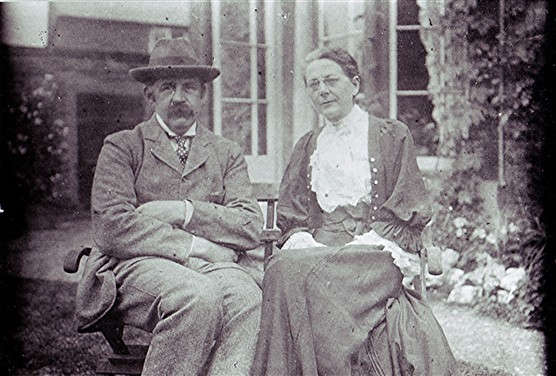North Common Heath Farm House

This house is late 16th century in origin with later additions and alterations. It is stuccoed and roughcast at the rear. The front range is late 18th early 19th red brick casing. There is a timber frame interior on a T plan. The house consists of two storeys. The front has four glazing bar casements and two doors with porches, each having two slender Tuscan columns and thin hoods. There is a broad ridge stack on the left centre, beneath which are two large 16th century rooms. These were heightened in the late 17th century.

The rear wing is early 17th century. Another addition was made at northern end of the front range in the early 18th century. Inside, there is a late 17th century staircase. A small weather boarded barn can be seen at the west end of the house.

The earliest reference to the site seems to be linked with moves to encroach upon the Heath. The people of Flamstead had long claimed the same rights over the Heath as the people of Redbourn.
They could drive their herds over it on the way to market in St Albans, graze their animals on it, and even dig up clay or sand from it. They objected when Thomas Bedel built a house on what they saw as their Heath near a ‘footpath and the King’s highway’ and tried to make him take it down. This could be the first reference to the land on which the present Heath House stands.
One of the best known families who lived in the house were the Peake family.


Robert Cecil Peake born in 1858 came from Staffordshire and with his experience gained from working in the mines, he installed the first electric generator to provide electric light to Cumberland House which he owned from 1889 after moving from Bletchley in Buckinghamshire. He was an important man in the village, serving as president of most of the village organisations, school manager and church warden. He was also a Justice of the Peace for St Albans. When he died in 1933, his daughters, Gertrude and Anne moved to Heath House and built another house in the grounds. This was called ‘Heybrigge’, now demolished and replaced by three modern houses there.
Sharman Brown nee Draper
My mum used to be housekeeper for the family who lived at The Heath, 1960’s onwards. They were the Hugh Jones family. Kenneth and Denise were both doctors. He a pediatrician and Harley Street specialist and she a GP. They were lovely. They had four children, Simon, George, Katie and Sarah. I used to babysit them, along with the future Archbishop of Canterbury’s children (at the time he was Bishop of St. Albans) and they were quite a handful! When I got married in 1970 many of my mum’s family came down from Yorkshire and Durham. The Hugh Jones were away on holiday so they lent us The Heath and all the family stayed there for free! How kind was that?